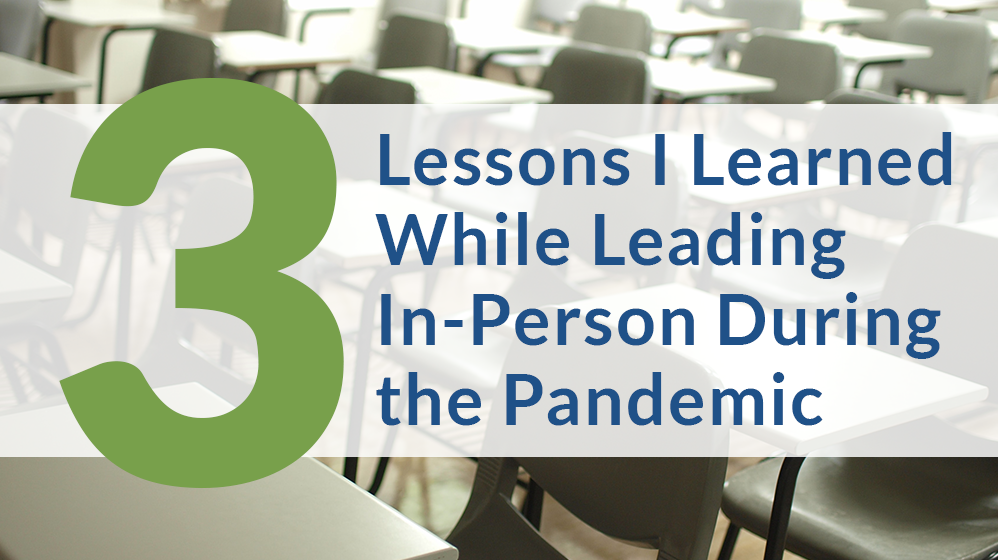Many school districts are beginning to consider bringing students back in-person for the first time since March 2020. My hope is that the experiences I have had this past school year will help others with planning and save them time and energy with the transition.
During July of 2020, our district decided that all K-6 students would return fully back to in-person instruction in September. The first thing I thought was, “This will never work! There is no way that I can safely have all of our students, and a full staff, in the building full time.” But, after taking a few deep breaths and looking at it as a puzzle to solve, I began the process of collaborating and planning.
Before I continue, here’s a little bit about Southold Elementary School: We are a small district located on the North Fork of Long Island in New York. This year we have approximately 350 students K-6 and just over 800 students districtwide. We are surrounded by vineyards and farms, the water is a block from the school, and the town is steeped in history. Southold is an amazing community whose families are extremely supportive of the district, which made reopening fully in-person possible.

There are an unlimited amount of lessons I’ve learned as a principal from our district being back to in-person this year, so choosing just three is not easy. I did choose the lessons I think will help support educators who are just now trying to reopen their schools fully for the first time. First, you need to understand that the “information” will change daily, if not more often, and you have to be flexible. The second is communication with all stakeholders is key. And lastly, students will adjust and adapt more quickly than the adults.
1). Be Flexible
The information that comes from the CDC, the Governor, the state education department, the state and local department of health, and possibly even the district, will change daily. We found that we would read a memo, email, article, discuss the implications of what was shared, begin to adjust our plan, and by that afternoon new information would be sent out that contradicted the original information. It was hard to keep up. We just began to anticipate that things would change and we were prepared to make the necessary adjustments.
2) Communicate! Communicate! Communicate!
Communication was the glue that held our district together before and throughout this ever-evolving school year. Over the summer, I conducted voluntary virtual meetings with the staff and would share the newest information, guidelines, and protocols–we adjusted our plan accordingly. Rightfully so, my staff was nervous about returning. One of my jobs as their leader was to help ease some of the stress by being open and honest with everyone. Taking their suggestions and ideas into account when making decisions was also important. I relied on the staff to help me see the district plan from their lens and encouraged them to help me make necessary adjustments. As a district, we also communicated with families through community forums, letters, and social media. We used surveys to gather information and used the data to guide our decisions.

3) Help Your Teachers Adjust
There was concern about our students having a hard time adjusting to all of the changes around our school; including wearing masks, social distancing, sitting at desks/tables with shields, lunch and electives in the classrooms, just to name a few. Previously, flexible seating was used in the majority classrooms, so to now be sitting in rows with shields on each table/desk was a huge change for us. Then add that we all were going to wear masks throughout the day, we would not be allowed to be closer than 6 feet for more than a minute or two, and we would all have to remain in our respective classrooms for specials (except physical education) and lunch. Much to my surprise, I quickly noticed that our students were far more adaptable than our staff. They are doing a phenomenal job adhering to the protocols.
As a staff, we had to attend to hundreds of little details throughout this process. Everything from measuring classrooms to get the number of desks/tables that would fit when spaced 6 feet apart, ordering more individual tables, removing bookshelves, extra seating, rugs, personal items from classrooms, ordering and installing hand sanitizer dispensers in each classroom, ordering and installing shields, and the list goes on.
We are all realizing that instruction will continue to look different going into next school year. We will not be able to gather the students on the rug for a read aloud or have them turn and talk during a mini-lesson. Hearing what students are saying through their masks can be challenging. It is a tough adjustment for our teachers, so it’s important for us as educational leaders to acknowledge and help them in any way we can.
Without the help of my school staff, my secretaries (heroes), the custodial and maintenance staff (rockstars), families and other principals that are in my #PLN, I would not have been able to make this tricky transition a reality or get through the year successfully. It truly does take a village.
In the end, being fully in-person has been a huge success for our school and district. Students are with their peers, receiving instruction live from their teachers, and they are thriving. It was worth it just to see their faces walk through our doors each morning. I am looking forward to adapting and adjusting what is currently in place, based on the updated guidance, as we plan for in-person instruction next year.






